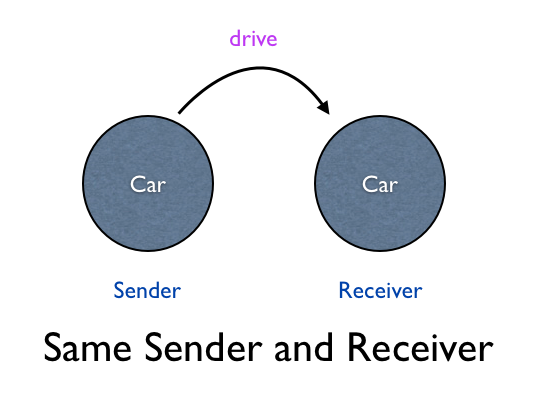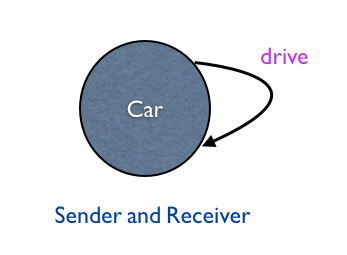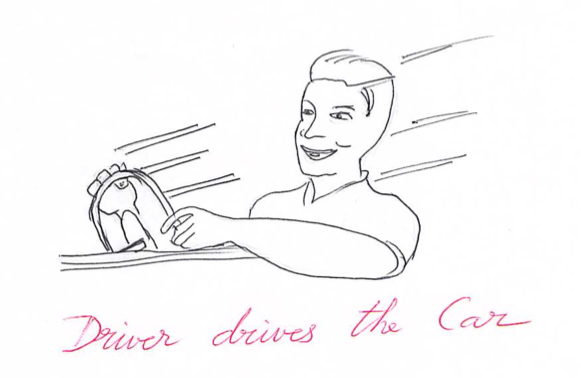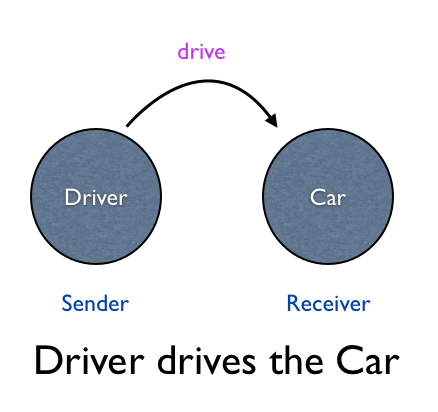Modeling the Real World
In this chapter, you will learn how we model the real world using objects that send messages to communicate.
Self Driving Car
The example we saw in previous section looks more like a self driving car.

The Car object sends drive() to itself.

In code, it will look like this:
class Car
def self.drive
p 'driving'
end
p "Sender is : #{self}"
p "Receiver is : #{binding.receiver}"
Car.drive
end
This prints:
Sender is : Car
Receiver is : Car
driving
You can see that the sender and receiver is the Car class. The binding method provides us the execution context. We can retrieve the receiver object from the execution context.
Driver and Car
In reality, it's the driver who drives the car.

Sender and Receiver

Intent vs Implementation
What is intent?
I want to drive the car. We don't reach into the transmission and pull levers to drive the car. We step on the gas to drive the car. Your grandma can drive the car without knowing the details of the engine. She expresses her intent by using the public interface of the car.
What is implementation?
The things under the hood of a car is the implementation. Only your car mechanic knows about the details of the car engine. You may be aware of the 3.0 litre V-6 engine, but you have no idea how it works.
Background Job Processing
Let's see an example for code that reaches into the implementation details of a method.
MyQueueClass.instance.enque(job)
This code knows that the implementation of the background processing class uses Singleton pattern. How can we fix this problem? To express the intent without any dependency on the implementation, we can re-write the code.
MyQueueClass.enque(job)
In this case, the client of the MyQueueClass is independent of the implementation details. We now have an intent revealing interface. This interface is stable. Tomorrow you may decide not to use the Singleton pattern, if so, the interface will not change.

Write an example program to illustrate the fact that a driver drives a car. Hint: It will be like the Teacher-Student example we saw in Message Passing chapter.
Summary
In this chapter, we discussed how we model the real world using objects that send messages to communicate. We also saw how to separate the intent from the implementation to define intent revealing interface.